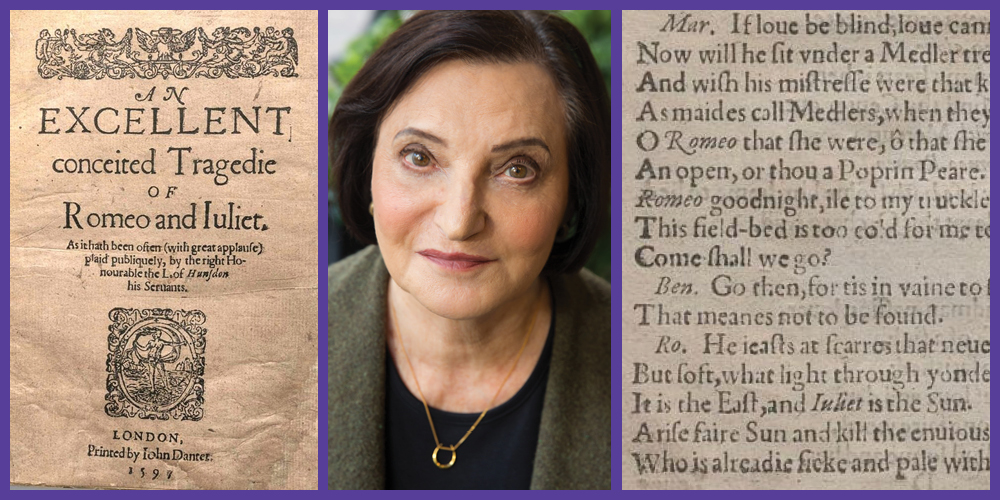
“The weight of their grief”
In a brief essay about the role of grief in Romeo and Juliet, production dramaturg Kristin Leahey writes, “The young, ill-fated couple, who unite only four brief times, engage in the greatest literary love story for the ages. For grief is … the greatest expression of love. And as much, or however little, we witness Romeo and Juliet experience the joys of love, we empathize with the weight of their layer upon layer of grief: for their embittered families, for the loss of their friends and relations, for his banishment, for her supposed death, for their few options, and for their lack of hours, days, and years. And we know Hamnet, Shakespeare’s 11-year-old son and a twin, died in 1596 [possibly the first production date of Romeo and Juliet]. Julia Kristeva and other scholars argue that Shakespeare turns a play of folly and romance to tragedy at the apogee with the death of Mercutio and Tybalt (and subsequently the demise of most of the play’s young), as an expression of grief for the loss of his son.”
A dramaturg’s notes
For a fascinating look inside the dramaturgy process, Romeo and Juliet dramaturg Kristin Leahey generously shared a few of her notes that she used in preparation for this production. This outline of literary tidbits helped the cast and crew think about characters and plot points while they worked their way through the staging of this play.
A Shakespeare overview
Shakespeare scholar Marjorie Garber, author of Shakespeare After All and many other accessible, engaging works of theatre criticism, has a series of lectures at Harvard that are available on YouTube. Get ready for hours of thought-provoking ideas about Shakespeare and his times, soliloquies, public hangings, happy endings, and a play-by-play guide to a few of his most famous works.